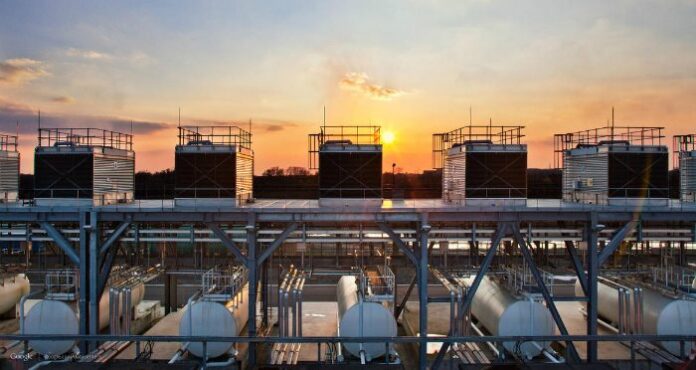Learn more about data center power needs and moves toward sustainability
As the demand for streaming video, mobile applications and other technologies that require high-bandwidth continues to proliferate, the need for data centers will continue to increase. In this article, we look into data center power needs, which have a direct impact on operating costs, as well as moves toward bringing sustainable practices into the data center industry.
In 2013, data centers in the United States consumed about 91 billion kilowatt-hours of electricity, according to the National Resources Defense Council, which equates that energy consumption to the amount need to power “all the households in New York City twice over.”
When you consider that tremendous level of power consumption, it follows that companies in the data center business are acutely interested in maximizing energy efficiency and minimizing power costs.
The NRDC reports large scale data centers, like those operated by the big players Google, Amazon.com or Facebook, “provide shining example of ultra-efficient data centers. Yet small, medium and corporate data centers are responsible for the vast majority of data center energy consumption and are more generally much less efficient.”
Efficiencies can be gained by better understanding of under-utilization of data center hardware, as well as through “systemic measures such as the public disclosure of efficiency metrics are necessary to create the conditions for best-practice efficiency behaviors across the data center industry.”
Enterprise application software provider SAP offered up a rundown of data center power using one of its own facilities as an example: “The data center is connected to two separate grid sectors operated by the local utility company. If one sector were to fail, then the second one will ensure that power is still supplied.
“In addition, the data center has 13 diesel generators, which are housed in a separate building. Together, they can produce a total of 29 megawatts, an output that is sufficient to cover the data center’s electricity demand in an emergency. The diesel motors are configured for continuous operations and are always in a preheated state so that they can be started up quickly in the event of an incident. It only takes an outage in just one of the external grid sectors to automatically actuate the generators.”
There’s also a backup battery supply that ensures “all operating applications can run for 15 minutes. This backup system makes it possible to provide power from the time a utility company experiences a total blackout to the time that the diesel generators start up.”
All of the equipment in data centers produce heat that has be dissipated, which creates another major, recurring power need.
SAP explains the importance of cooling: “If [heat] is not dissipated, the processor’s efficiency decreases, in extreme cases, to the point that the component could fail. Therefore, cooling a data center is essential, and because of the concentrated computing power, the costs to do so are considerable…Cool air set to a temperature of 24 degrees Celsius to 26 degrees Celsius is blown in through holes in the floor, flows through the racks and dissipates the heat emitted by the servers.”
Sustainability in data center power
As data center power needs continue to grow, data center owners and operators are continuously looking for ways to reduce recurring power costs, and in some cases, even turn a profit by producing usable excess energy.
Facebook, which has huge interests in data center efficiency given its massive, global reach, plans on running its new facility in Ireland using 100% renewable power.
The $220 million project in Clonee is set to harness wind energy to run its servers. Further, Facebook has a plan to run 50% of its global facilities with environmentally friendly energy sources by 2018.
“Clonee will be packed full of cutting-edge technology, making it one of the most advanced, efficient and sustainable data centers in the world,” Facebook VP for site operation Tom Furlong said, according to IrishCentral.
Switch, a major data center provider based in Las Vegas, but operating a new facility in Michigan, will also work to offset its power consumption.
According to Data Center Knowledge, Switch is set to use renewable energy credits from the Consumers Energy’s Green Generation program. Consumers Energy provides power to parts of Michigan.
Switch also wants to eventually generate its own power. “We will have a new generation resource in the market,” VP of strategy Adam Kramer said. “In all likelihood it will be wind.”
In the case of Swedish Internet service provdier Bahnhof AB, the company has flipped the data center paradigm and is actually turning excess energy into revenue.
“The normal business idea for a data center,” Karlung said, “is to either use active cooling [or] the other alternative is what you call free cooling, which is based on the idea that it’s cold outside so you use the cold outside air to cool the facility. This is something different.”
Essentially, heat produced by Bahnhof’s data center is ventilated then captured by the municipal power utility and provided to rate-payers to heat their apartments.
“What do you do with all this excessive heat?” Karlung asked. “The answer is quite simple. You ventilate out the apartments. This is the real model to work together with the utility company. In order to get this model to work, you have to have a densely populated area in a cold climate,” he said. “All the energy we put in is used by the servers, yes, but on top of that, we get energy back. It’s kind of a new concept.”
Here’s a video tour of a Bahnhof AB data center in Stockholm.

